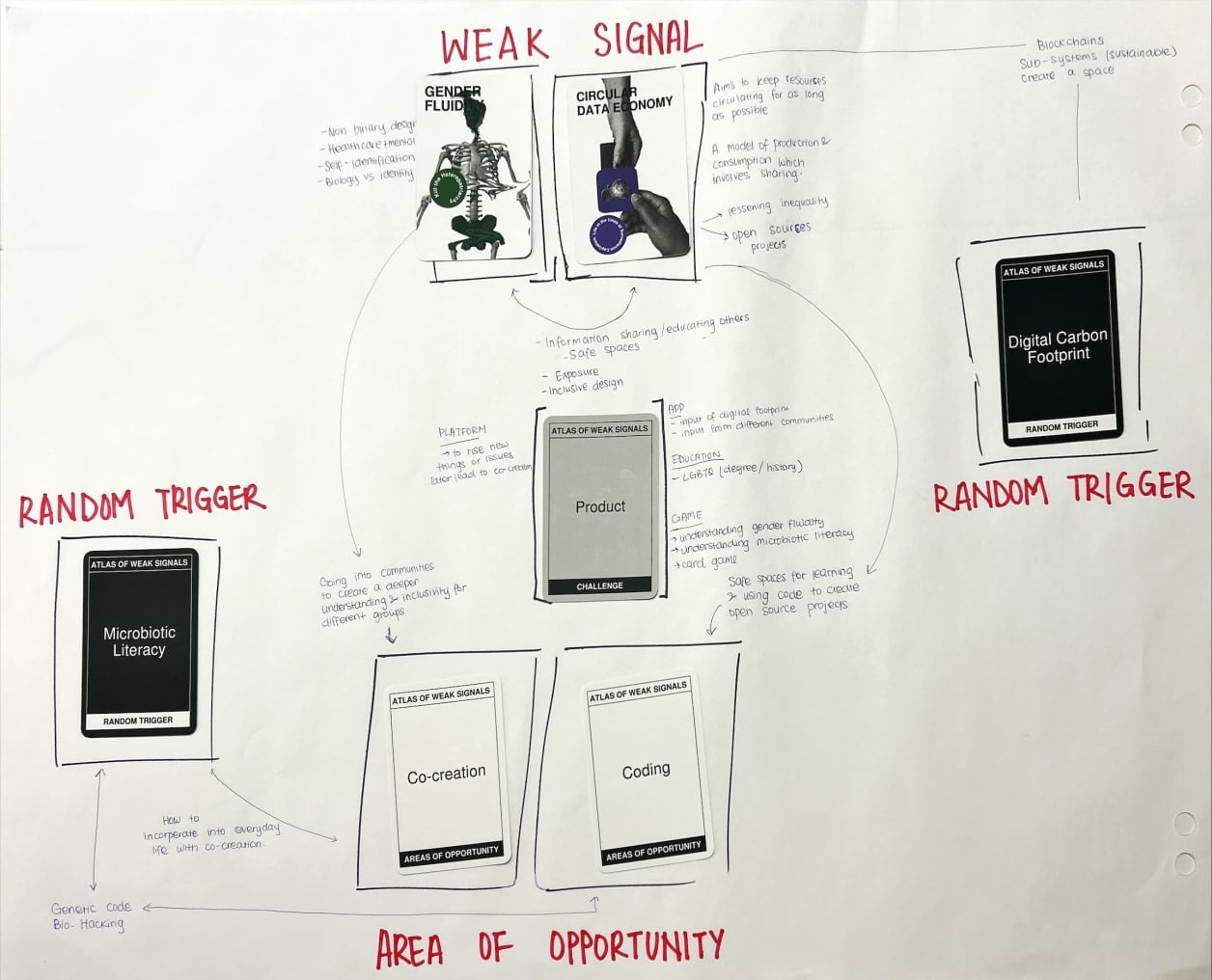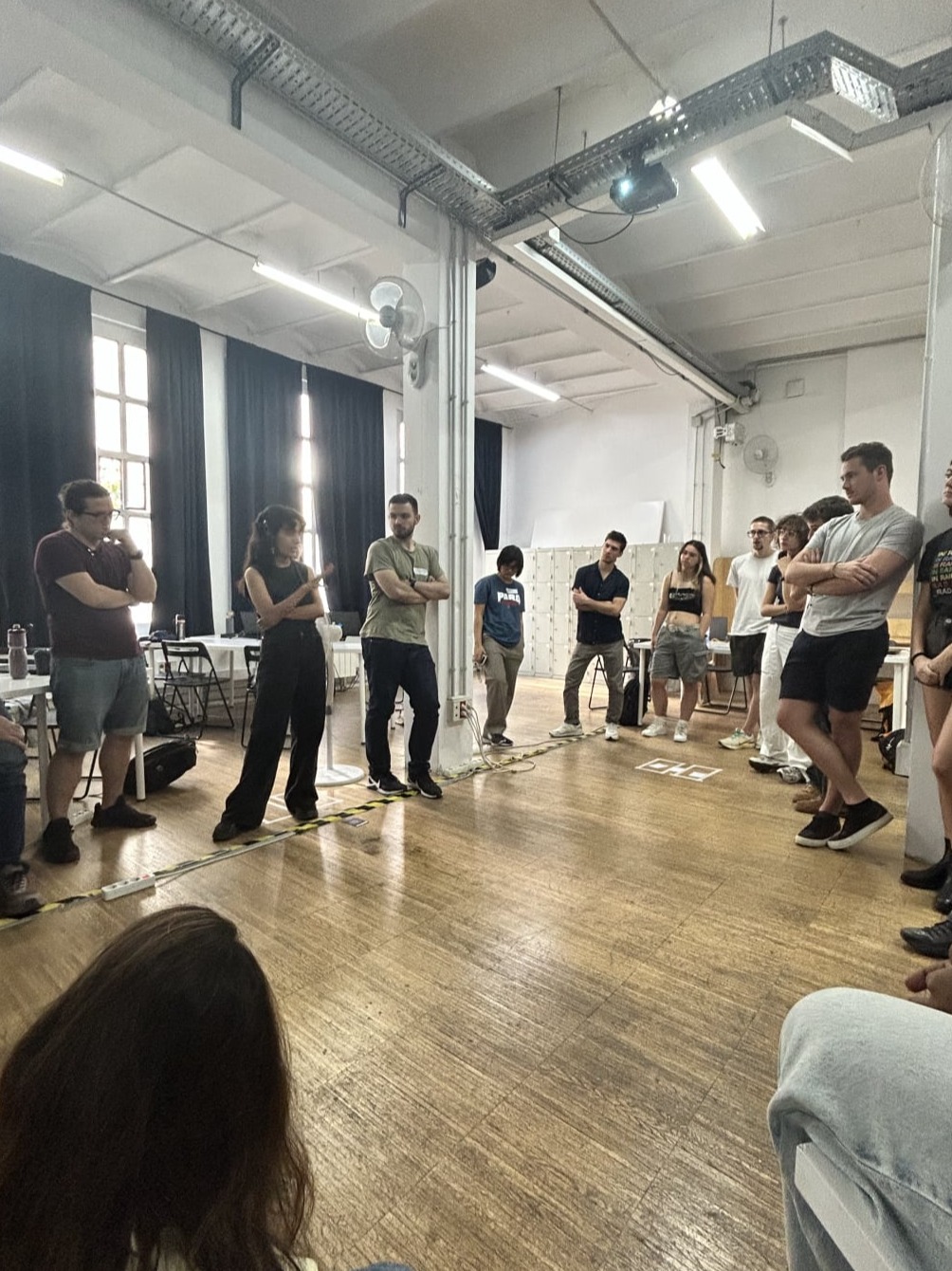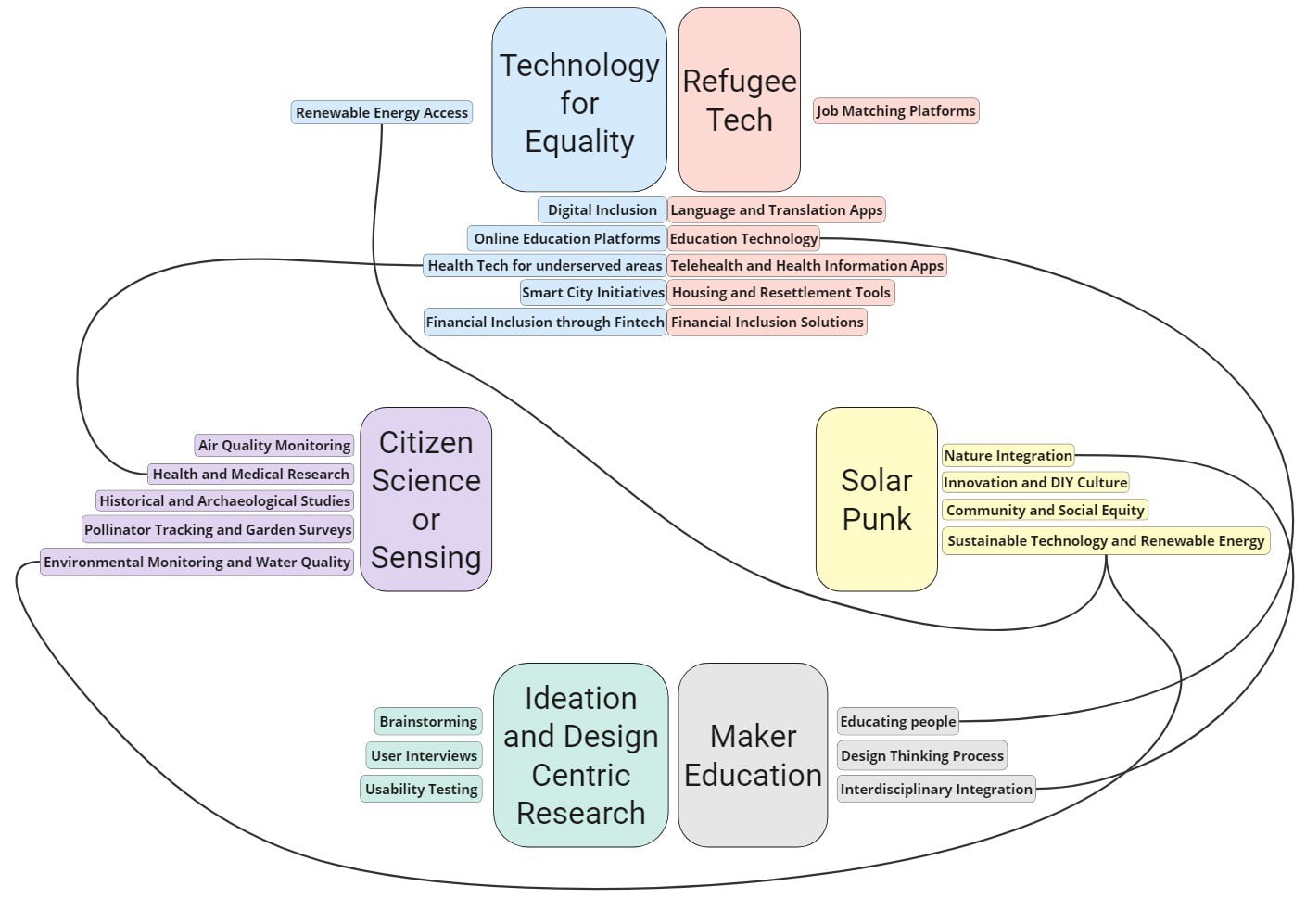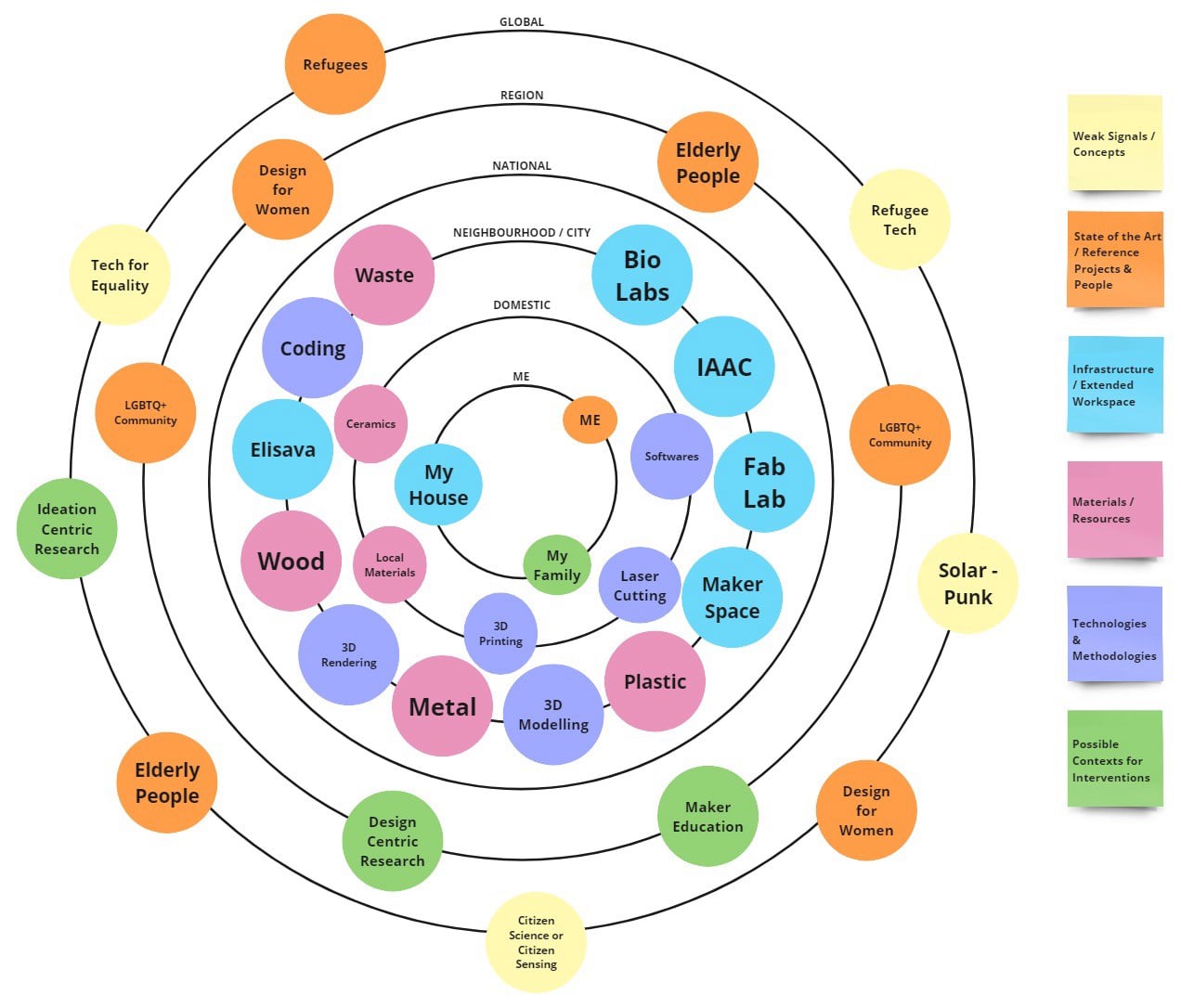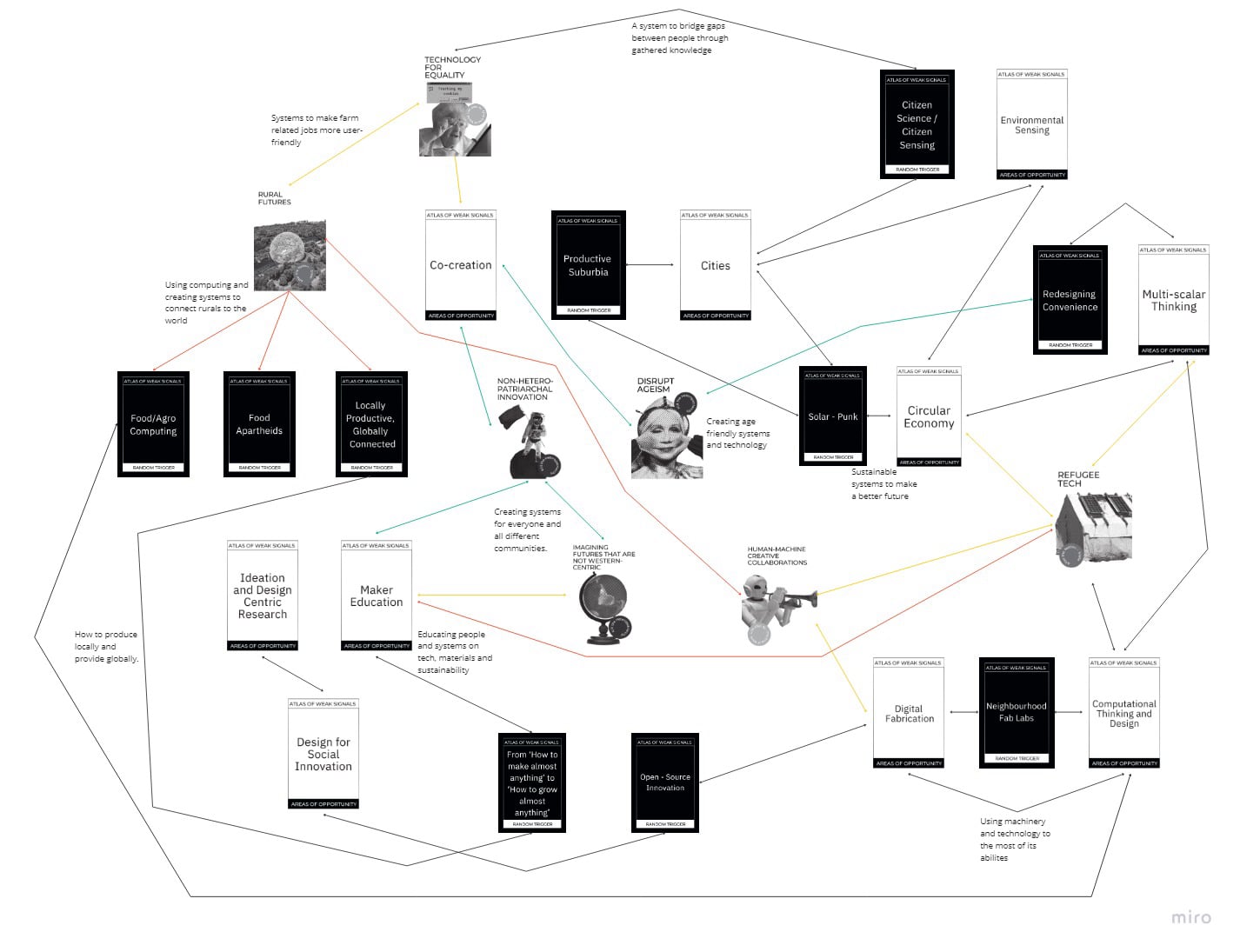My Personal AoWS
Once the class and the group activity was completed, I went through the deck of cards again to understand in depth of weak signals, area of opportunities and the random triggers to figure out my personal area of interest to create my own design space.
Weak Signal 1 -
Technology for equality refers to leveraging technological advancements to bridge societal gaps and promote fairness, inclusivity, and opportunities for all. This concept aims to address social, economic, and educational disparities using technology.
Weak Signal 2 -
Refugee tech refers to the use of technology to address the unique challenges and needs of refugees, asylum seekers, and forcibly displaced populations. It involves developing and deploying tech-based solutions to improve their access to essential services, education, healthcare, employment opportunities, and overall well-being.
Area of Opportunity 1 -
Maker education, often referred to as maker-centered learning, is an educational approach that emphasizes hands-on, experiential learning through creating, designing, building, and tinkering with physical or digital objects. It encourages students to be active participants in their learning process, fostering creativity, problem-solving skills, and a deeper understanding of concepts through practical application.
Area of Opportunity 2 -
Design ideation is a creative process within the realm of design thinking, where individuals or teams generate a wide range of ideas and concepts to solve a specific problem or address a particular challenge. It's a crucial stage where brainstorming and creativity play a central role. The goal is to explore diverse possibilities and perspectives to arrive at innovative and effective design solutions. Techniques like brainstorming, mind mapping, sketching, and prototyping are often employed during the ideation phase.
Design-centric research involves conducting investigations and studies with a primary focus on understanding user needs, behaviors, preferences, and contexts. This research informs and guides the design process, ensuring that the resulting products or services are user-centered and meet the intended users' requirements. It may involve techniques such as user interviews, surveys, usability testing, and ethnographic research to gain deep insights into users and their interactions with the design.
Random Trigger 1 -
Citizen science involves engaging the general public or non-professional scientists in scientific research activities or projects. Participants, often referred to as "citizen scientists," contribute their observations, data collection, or analyses to assist scientists and researchers in conducting research on a large scale. This collaborative effort not only helps in gathering extensive data but also promotes public engagement with science and encourages a sense of community involvement.
Random Trigger 2 -
Solar-punk is a genre and a movement that envisions a future where sustainable, renewable energy sources are at the forefront of society, leading to a harmonious relationship between humans and nature. It's a response to dystopian and apocalyptic narratives often found in science fiction, offering an optimistic and hopeful outlook for the future.
